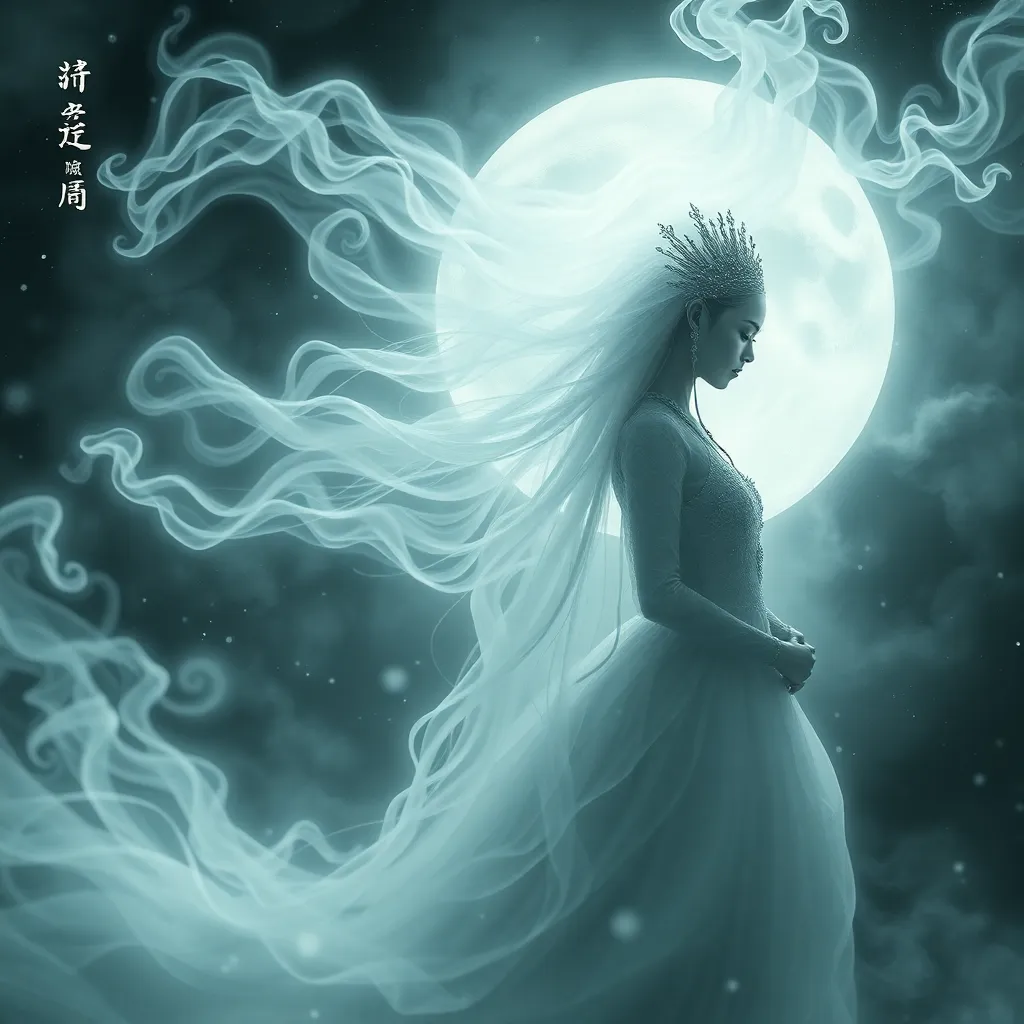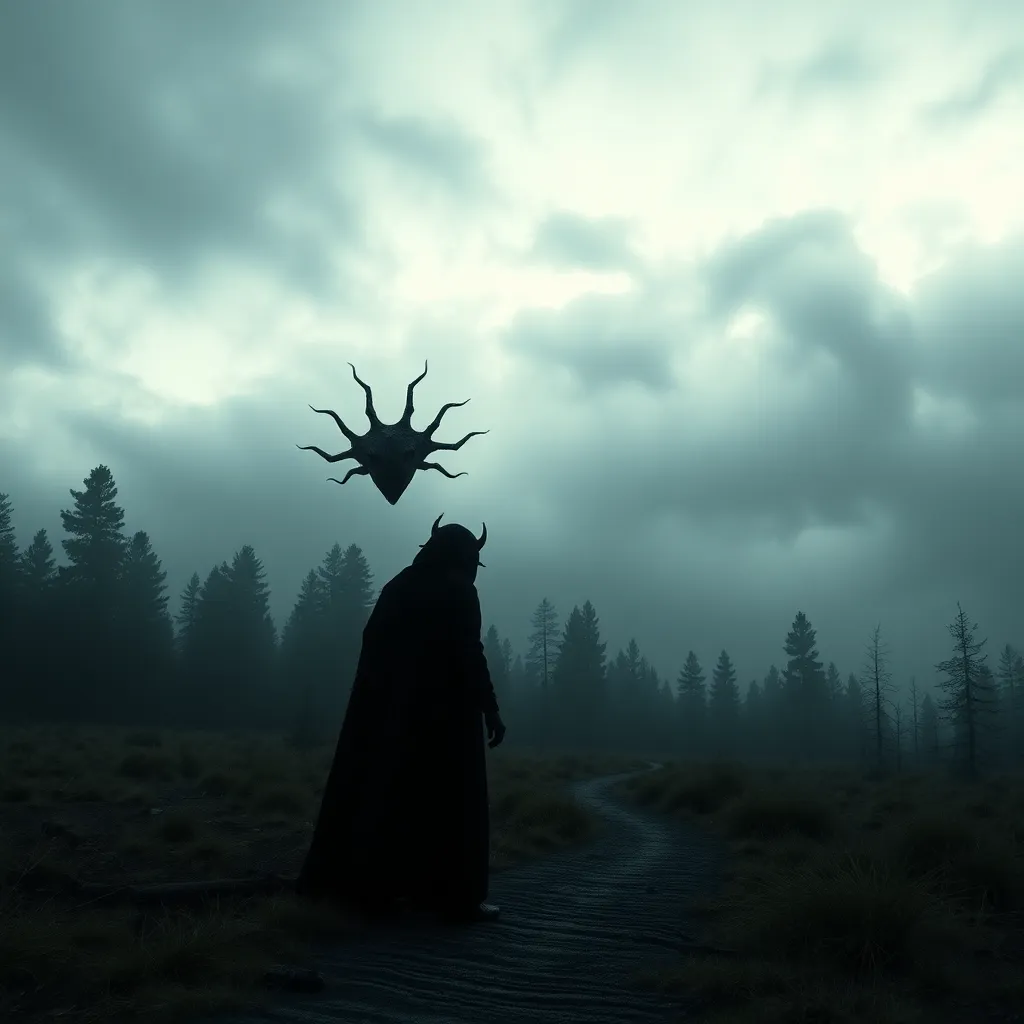The Ghostly Bride: Unveiling the Mysterious Tales of the Korean Gumiho
I. Introduction to the Gumiho
The Gumiho, often translated as “nine-tailed fox,” is a legendary creature in Korean folklore, known for its beauty and cunning. Traditionally depicted as a female figure, the Gumiho possesses the ability to transform into a beautiful woman, often seducing men and preying on their life force.
Culturally, the Gumiho represents a blend of fear and fascination, embodying both the allure of femininity and the dangers of unchecked desire. The stories surrounding the Gumiho have persisted through generations, evolving while maintaining core themes of seduction and danger.
The historical origins of the Gumiho legend are believed to date back to ancient Korea, where tales of fox spirits were common in various East Asian cultures. Over time, the Gumiho became a uniquely Korean symbol, entwined with the nation’s identity and cultural narratives.
II. The Ghostly Bride: A Unique Variation of the Gumiho Tale
One of the most poignant variations of the Gumiho narrative is the tale of the Ghostly Bride. This version introduces a spectral element, where the Gumiho is portrayed as a tragic figure bound by love and betrayal.
Distinctive features of the Ghostly Bride include:
- A tragic backstory often involving unrequited love or betrayal.
- The Gumiho’s transformation into a ghost, highlighting themes of loss.
- A focus on emotional depth, contrasting with the typical predatory nature of the Gumiho.
Central themes in the Ghostly Bride narrative revolve around love, loss, and revenge. These stories often portray the Gumiho as a victim of circumstance, evoking sympathy from the audience and challenging traditional views of the creature as merely a seductress.
III. The Transformation of the Gumiho in Modern Media
The Gumiho has undergone significant transformation in modern media, particularly in Korean television dramas and films. In contemporary portrayals, the character has shifted from a purely malevolent figure to a more complex, multidimensional protagonist.
Notable series and movies featuring the Gumiho include:
- My Girlfriend is a Gumiho – A romantic comedy that explores the lighter side of Gumiho lore.
- Gumiho: Tale of the Fox’s Child – A darker narrative that delves into the tragedy of the Gumiho’s existence.
- The Fox’s Wedding – A fantasy romance that intertwines traditional elements with modern storytelling.
These contemporary portrayals have reshaped public perception, presenting the Gumiho as a figure capable of love, sacrifice, and redemption, rather than just a monstrous being.
IV. Symbolism and Meaning Behind the Gumiho Myth
The Gumiho serves as a powerful symbol of femininity and power within Korean folklore. It represents the duality of women in society, reflecting both the reverence and fear associated with female sexuality and autonomy.
Moreover, the Gumiho’s relationship with societal norms and gender roles is deeply intertwined with cultural expectations. Historically, Gumiho tales often illustrate the consequences of defying these norms, serving as cautionary tales for women who seek independence.
Cultural interpretations of the Gumiho have varied across different eras, evolving from a fearsome predator to a more sympathetic figure, revealing changing societal attitudes towards women and power.
V. Regional Variations of the Gumiho Legend
The Gumiho legend is not monolithic; it varies significantly across different regions of Korea. Each area has its unique take on the Gumiho, influenced by local customs, beliefs, and historical contexts.
For instance, in some regions, the Gumiho is depicted as a benevolent spirit who helps humans, while in others, it is solely a malevolent being. This diversity showcases the adaptability of the Gumiho myth.
Comparatively, the Gumiho shares similarities with mythical creatures in other cultures, such as the Japanese kitsune and the Chinese huli jing. These creatures also possess transformative abilities and embody themes of seduction and danger.
The geographical and cultural nuances significantly influence the narratives surrounding the Gumiho, demonstrating the rich tapestry of folklore in East Asia.
VI. The Role of the Gumiho in Korean Festivals and Rituals
Historically, the Gumiho has played a role in various Korean festivals and rituals. These events often celebrate the changing seasons and harvests, incorporating the Gumiho as a symbol of transformation and renewal.
Modern celebrations continue to honor the Gumiho’s legacy, with festivals showcasing traditional performances and storytelling. These events serve to preserve the cultural significance of the Gumiho while adapting to contemporary interests.
The Gumiho has also influenced Korean art and literature, inspiring countless works that explore its themes and narratives. From paintings to novels, the Gumiho remains a compelling subject for artistic expression.
VII. The Psychological and Sociological Aspects of Gumiho Stories
The Gumiho embodies societal fears and desires, reflecting deep-seated anxieties about femininity, power, and morality. These tales often serve as mirrors to the cultural psyche, highlighting the complexities of human relationships and the consequences of desire.
Psychologically, Gumiho stories impact listeners and viewers by evoking emotions such as fear, empathy, and fascination. They challenge audiences to confront their perceptions of good and evil, love and betrayal.
Moreover, discussions surrounding the Gumiho often delve into morality and ethics, questioning the implications of the Gumiho’s actions and the societal norms that shape these narratives.
VIII. Conclusion: The Enduring Legacy of the Gumiho
In summary, the Gumiho myth encompasses a rich tapestry of themes, from love and loss to power and femininity. Its enduring legacy speaks to the complexities of human nature and societal evolution.
The Gumiho remains relevant in contemporary society, reflecting ongoing discussions about gender roles and identity. As modern interpretations continue to emerge, the Gumiho’s story evolves, ensuring its place in the cultural imagination.
Ultimately, the future of Gumiho tales will likely see further exploration of its multifaceted nature, allowing new generations to engage with this captivating figure in fresh and meaningful ways.




